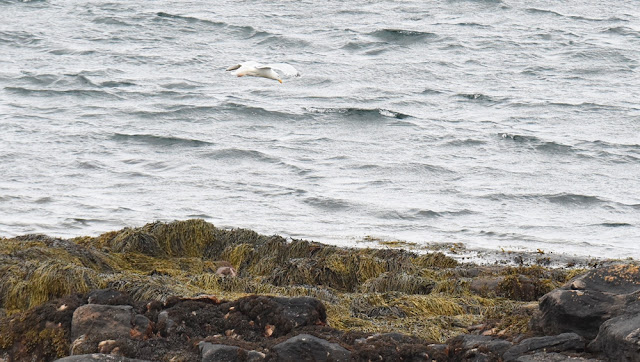Otters in the Western Isles
Luskentyre beach in South Harris, one of the finest beaches in the world, backed by rugged mountains and edged with weedy rocks which are rich feeding grounds for otters.
I recently spent a week on the islands either side of the sound of Harris. Golden Eagles and White-tailed Sea-eagles aplenty, and there were Red-throated Divers, Corncrake and other rare birds famously found in the islands. Although I like to see and hear the abundance of the more common species, Oystercatcher, Redshank and Snipe. And I spent hours watching otters. They are so adept at hunting, agile, quick, such well adapted animals, I could only sit back and admire them. The one in the photograph above is lying asleep on the seaweed in the background. They are so easiliy overlooked when lying quietly on land.
One clue to their presence can be the behaviour of the birds, like this Herring Gull that had spotted an otter eating a fish. They are probably easier to see from the air. The gull hung around from any scraps, but there were none.
Otters are not much easier to see when swimming at sea either. Look for a head, slimmer and more pointed than a seal's. Seals abound in these seas and every one has to be checked not to be an otter.
Another clue to spot an otter at sea is the flick of a tail. Like the one above, as the otter bobbed in the waves keeping in balance as it munched on a Butterfish.
This one was diving to hunt through the fronds of seaweed fringing the tide zone in a bay. It brought some items onshore to eat, others it persisted in eating while treading water. However, their forepaws are not adapted to gripping and Butterfish are incredibly slippery, hence their name.
But when you have strong jaws and very sharp teeth, you can do it.








No comments:
Post a Comment